VIOLETA, UV-Based Covid-19 Sterilization Robot Collaboration by ITS – Unair
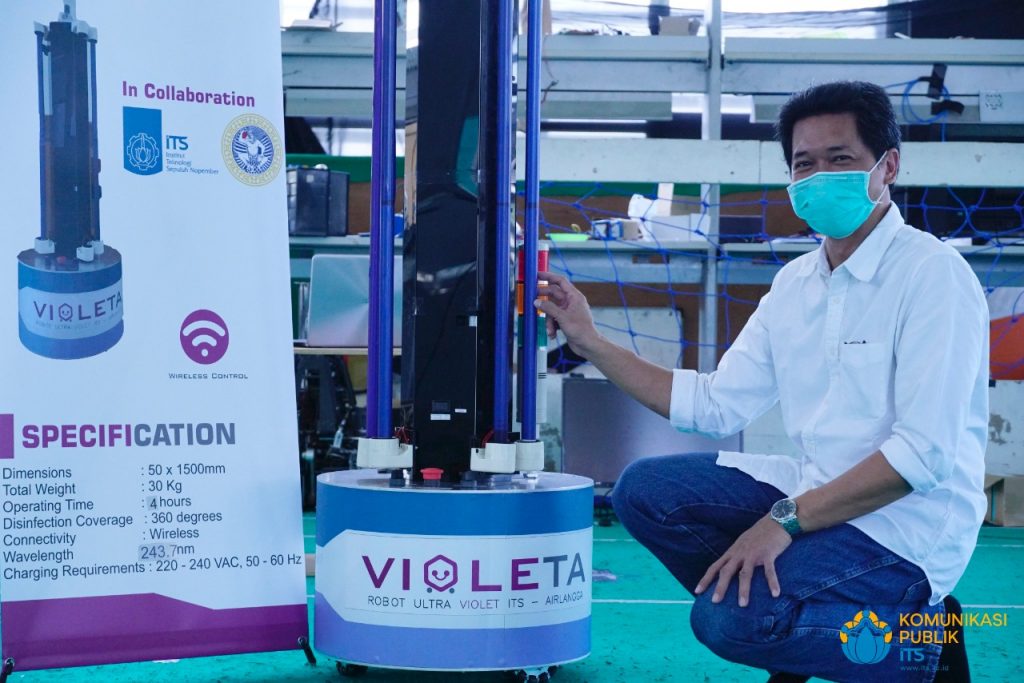
Vice Rector IV’s Bambang Pramujati ST MSc Eng PhD explaining Violeta Robot
ITS campus, ITS News – Sepuluh Nopember Institute of Technology (ITS) collaborating with Airlangga University (Unair) through the Hospital of Airlangga University (RSUA) continues to produce innovation technology for handling Corona virus outbreak (Covid-19). This time, the innovations is in the form of Ultra Violet ITS – Airlangga (VIOLETA) robot to facilitate the process of sterilization the room for Covid-19 patients.
ITS vice Rector IV Bambang Pramujati ST MSc Eng PhD explained, the idea of creating this VIOLETA robot began when some of ITS lecturers managed to research the use of ultraviolet rays (UV) to eliminate or inhibit the growth of microorganisms.
Another reason to create this robot is also to avoid physical contact with exposure to UV rays because it is very dangerous when it comes to humans directly. “Therefore, ITS innovating by creating this VIOLETA robot,” decompose the vice rector of research, innovation, cooperation, and international relations.
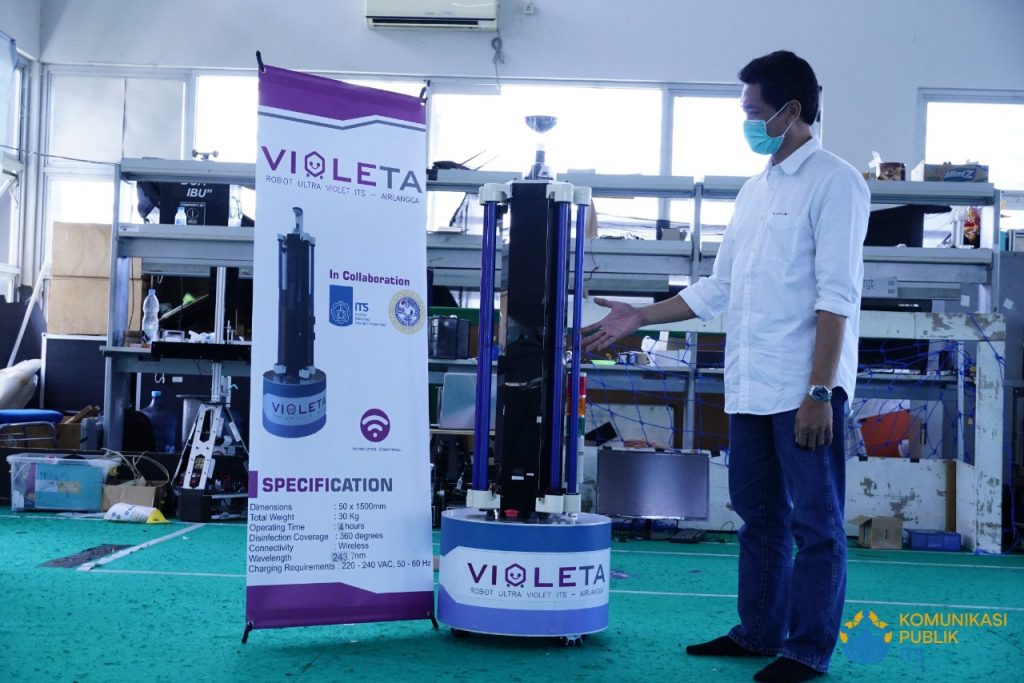
Vice Rector IV Bambang Pramujati ST MSc Eng PhD when explaining related innovations Robot Violeta
The 1969-born lecturer explained, the way VIOLETA works using UV lamps that are controlled through a remote wireless control based. The Robot is effectively used at a distance of 1 – 2 meters to the object by takes 10 – 15 minutes to perfectly sterilize.
One of VIOLETA’s research teams, Endarko MSi PhD, added that in general, the UV lamps used by the remote control have a wavelength of 200 – 300 nanometer (nm). “Practice and theory, the wavelength range can kill microorganisms well,” said this medical physicist.
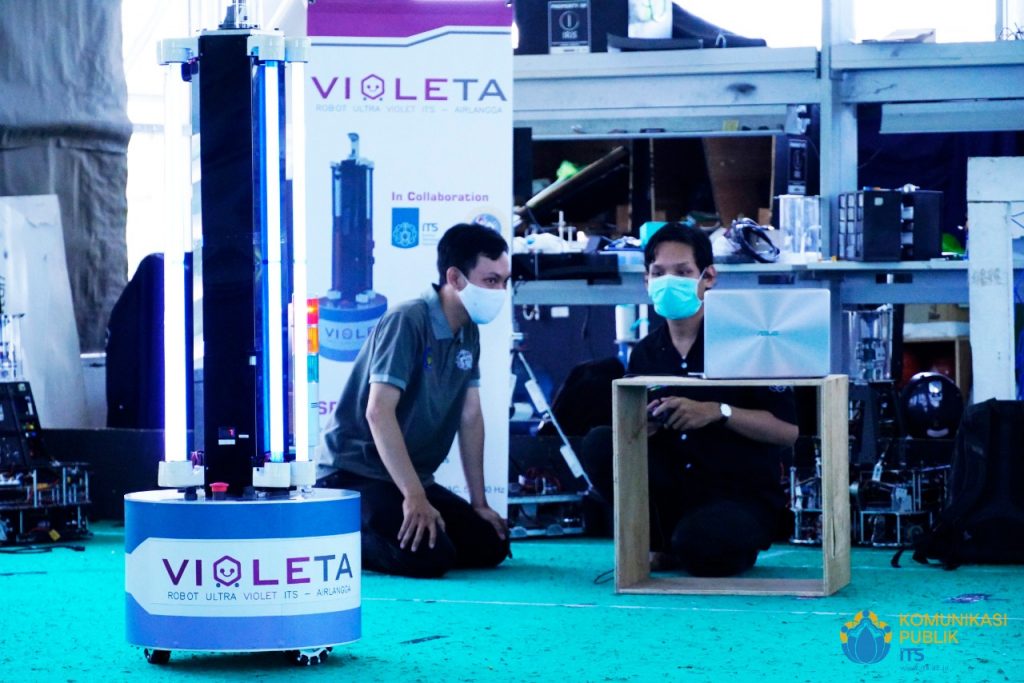
Robot Violeta tested in ITS Robotics Centre building before being handed over to RSUA later
This Department of Physics lecturer also explained that the 30 watt UV lamp is safer than using disinfectant material. This is due to the absence of residue or residual chemicals left behind after the sterilization process. “However, the room must be empty when it’s sterilization time,” he said.
As for the application in Covid-19 case, the VIOLETA robot has the benefit of being able to sterilize Used isolation chamber or the area once used in handling Covid-19 and without involving humans directly. “So, for security risk is also less,” said Endarko.
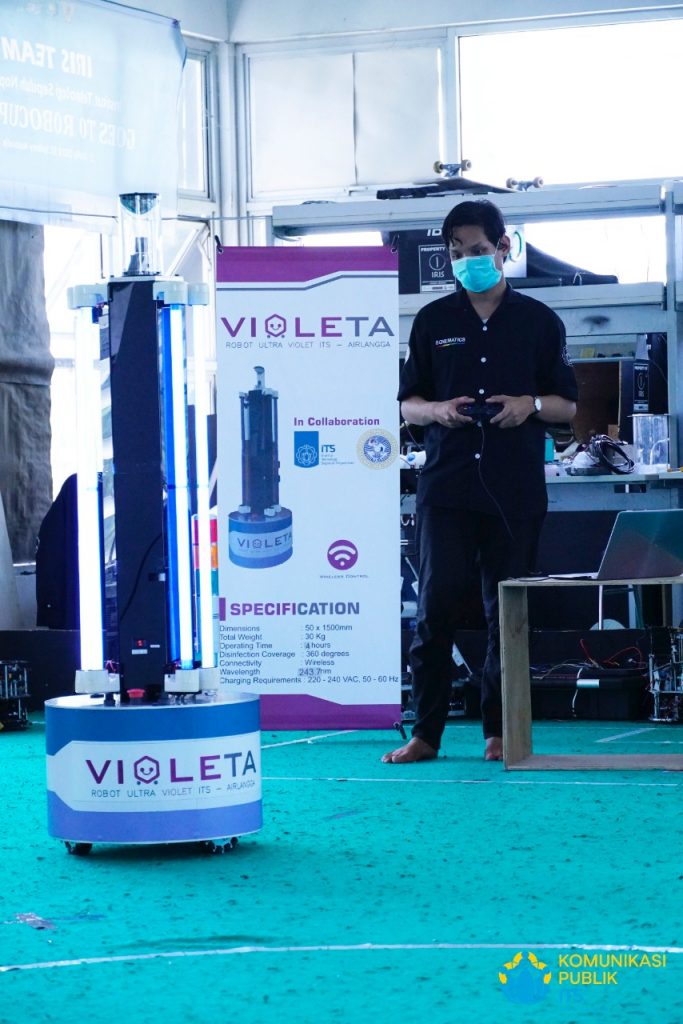
Achmad Zidan Akbar, ITS Student from Informatics Engineering Department, as a programmer when running Robot Violeta test before being handed over to RSUA
Meanwhile, one of the programmers of VIOLETA robot team Achmad Zidan Akbar said, the robot with a weight of 30 kilograms is using the basic platform of ITS football robot named IRIS as it is used in previous RAISA robots. Not only that, VIOLETA also uses an inverter to convert the direct current of the battery into alternating current which will turn on the UV lamp. “This Robot can be used for 4 – 6 hours when the lamp is on,” explained the students from the Department of Informatics Engineering 2018.
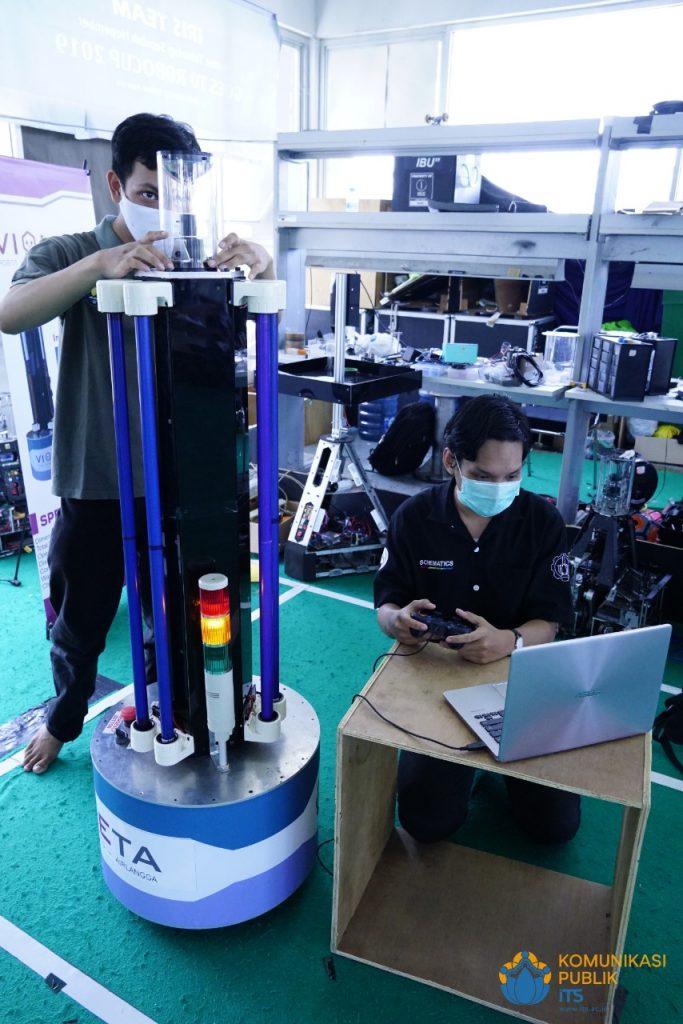
Student team when running Robot Violeta test at ITS Robotics Center before being handed over to RSUA later
At the end of the interview, Bambang also revealed that ITS will soon send the 1.5-metre-high VIOLETA robot to the RSUA, after a microbial test in the laboratory in ITS Department of Biology. “In the meantime, ITS gives only one robot to RSUA, because this robot’s mobility is very fast and easy,” he concluded. (Sen/Anjani/ITS Public Relations Officer)
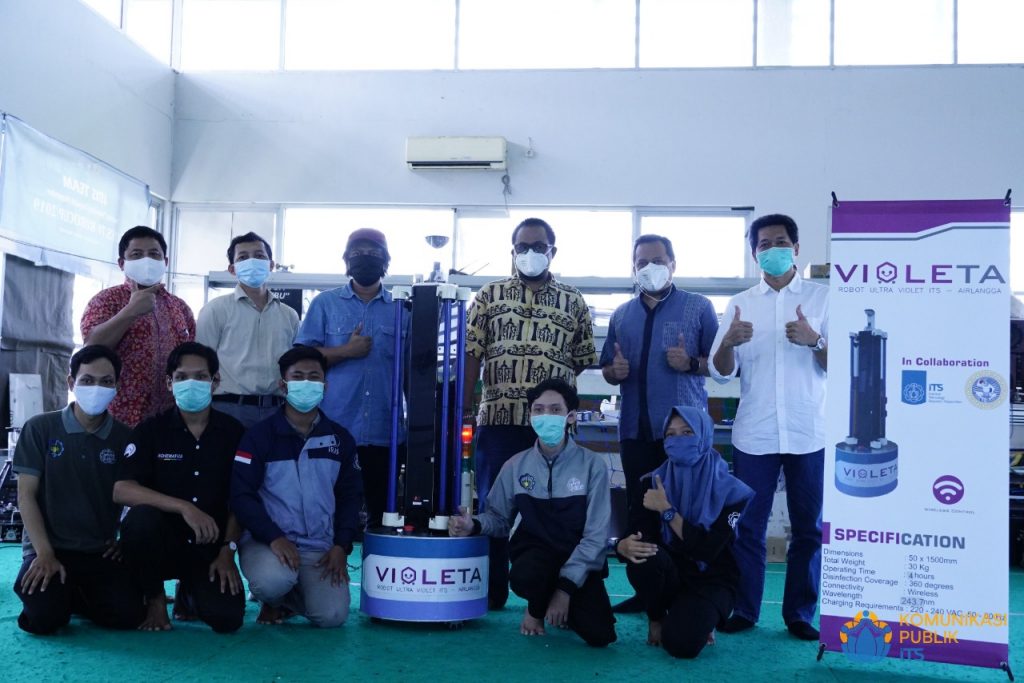
Robot Violeta team from ITS consisting of lecturers and students with ITS Vice Rector IV Bambang Pramujati ST MSc PhD (right)
Related News
-
Faithful in Times of Joy and Sorrow, Married Couple Graduate with Doctorates Together at ITS
ITS Campus, ITS News — As though guided by one heart and one soul, Dr Hanugra Aulia Sidharta ST
April 24, 2020 20:04 -
ITS Wins 2024 Project Implementation Award for Commitment to Gender Implementation
ITS Campus, ITS News —Not only technology-oriented, Institut Teknologi Sepuluh Nopember (ITS) also show its commitment to support gender
April 24, 2020 20:04 -
ITS Professor Researched the Role of Human Integration in Sustainable Architecture
ITS Campus, ITS News –The developing era has an impact on many aspects of life, including in the field
April 24, 2020 20:04 -
ITS Sends Off Group for Joint Homecoming to 64 Destination Areas
ITS Campus, ITS News — Approaching Eid al-Fitr, the Sepuluh Nopember Institute of Technology (ITS) is once again facilitating academics who want
April 24, 2020 20:04
